Ixalan came out in September of 2017, and was, from a creative and design standpoint, a mild disappointment. It was a low-value set that came out after two blocks with “Masterpieces,” at a time when Wizards’ design philosophy was shifting, a set sandwiched between the tired releases of Modern Masters 2017 and Iconic Masters.
Design-wise, it was a deliberately tepid set, with the Mythic slot full of introductory effects like Overflowing Insight and Star of Extinction and the Rares at a rate slightly below peak. Vraska’s Contempt and Ripjaw Raptor are fine cards, but they’re outclassed outside the context of their specific low-powered Standard environment.
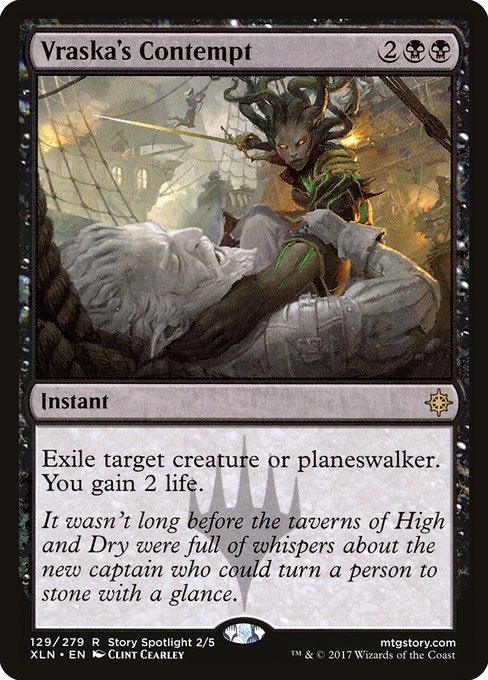
The power reduction was necessary–the era of Smuggler’s Copter and Aetherworks Marvel was just barely ended–but it did make drafting and building with the set a less exciting proposition. Ixalan is best remembered as the block that introduced Treasure as a codified token type (after an experiment in Theros block), the block that cemented Vehicles as a permanent card subtype after their introduction in Kaladesh, and the set that made Dinosaurs viable in Commander.
There have been worse blocks, but there’s something frustratingly inert about Ixalan–as though we were given the right mechanics, but not the right numbers. The effects of cards like Kinjalli’s Sunwing, Deadeye Tracker, and Herald of Secret Streams are desirable, but the stats and mana values are conservative compared to the blocks bracketing Ixalan.
In Standard, the Explore deck and mono-Blue Tempo were Ixalan’s main contributions; outside of Standard, you’d be hard-pressed to find Ixalan cards in top decks. All in all, Ixalan is mostly memorable for one of Magic’s silliest errata (Hostage Taker which, as printed, combos with itself to draw the game) and one of its most baffling bans (outside of context–in Standard, it was necessary) in Rampaging Ferocidon. Following Ixalan, we’d head to Dominaria, which blew wind into Magic’s sails, and Eldraine, which scuttled it immediately onto Aeaea.
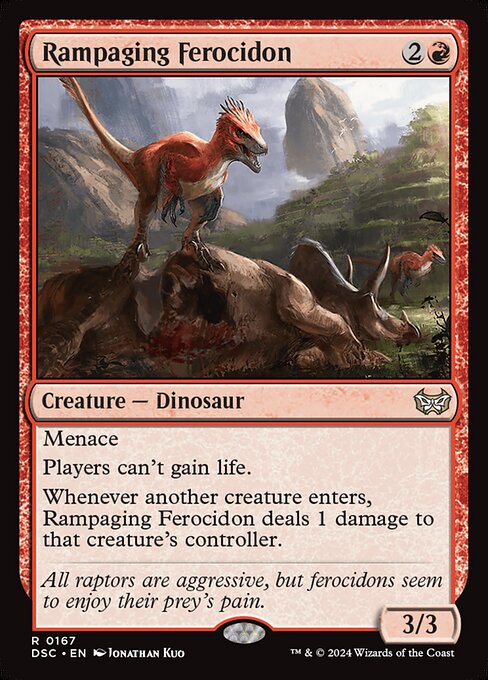
I’m harsh on Ixalan, but the setting is unique in Magic, so I was looking forward to our return–the world is vibrant, full of sunbleached swashbucklers, rampaging dinosaurs, and lush green and golden tones. I have fond memories of Dire Fleet Poisoner blowouts and mono-Blue tempo matches, and the followup set looks like it’s retained all the appealing parts of Ixalan while ramping up the power of individual cards. The designs weren’t there during our last visit, but the potential was–it seems as though Ixalan was setup, and Lost Caverns is the payoff.
Instead of Dire Fleet Captain, we have Stalactite Stalker; instead of Rowdy Crew, we have Bonehoard Dracosaur. There’s no better embodiment of this upgrade than the mechanics, which are creative and complex–Explore returns, but there are two new mechanics and one tweak to one of Magic’s most notorious mechanics in the set, all of which integrate nicely into Standard and potentially Pioneer.
The flipside of Rivals of Ixalan’s Ascend mechanic, which checked the number of permanents on the battlefield you controlled, descend tracks whether a permanent enters or has entered your graveyard from anywhere–hand, library, battlefield, exile (Riftsweeper does exist, after all), etc. Cracking a fetchland counts as descending, as does discarding a Bloodghast. It’s a very simple binary, and one that will occur naturally over an average game. That said, getting a permanent in your graveyard is not as easy as it looks, as the non-Fatal Push Revolt cards taught us. Greenwheel Liberator plus a fetchland was, if you trust prerelease speculation, going to change Modern, but, like Talara’s Battalion before it, it fell far short of contention.
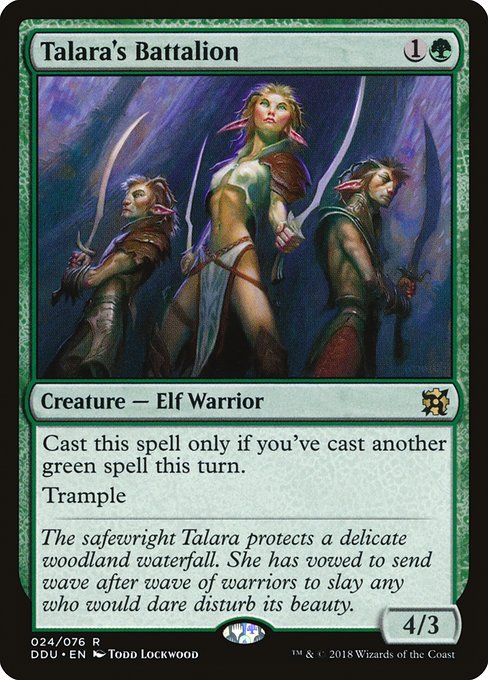
Descend lets you self-mill instead of sacrifice, and in Standard, it’ll dovetail well with Liliana of the Veil, but overall, I haven’t been impressed with descend as a mechanic. We don’t have very many exemplary discard outlets in Standard–Liliana of the Veil is a standout, but she’s once per turn. We do have powerful self-mill in the Lhurgoyf squad, though–Urborg Lhurgoyf, Cruel Somnophage, and Caverns’ latest version, Souls of the Lost, all of which are guaranteed to descend in a properly built deck and power up Descend as an ability. Large vanilla creatures aren’t precisely where you want to be in a Standard rife with tokens, no-questions-asked removal like Infernal Grasp, and Sheoldred, but if the format pivots, we can make 8/8 creatures at a moment’s notice.
Descend’s road gets even tougher once we include Descend X, as in Didact Echo or Souls of the Lost. Discarding or sacrificing permanents tends to happen regularly in a normal game, but keeping them there in a world of Unlicensed Hearse, Graveyard Trespasser, Agatha’s Soul Cauldron, and Farewell is a big ask. Descending will be the glue of the Limited format, but I don’t expect it to take off in Constructed, particularly without a Fatal Push analogue that’s decent un-descended and exceptional when you’ve descended. I don’t count Stactite Stalker, who is fun, but has the reek of Greenwheel Liberator all over him.
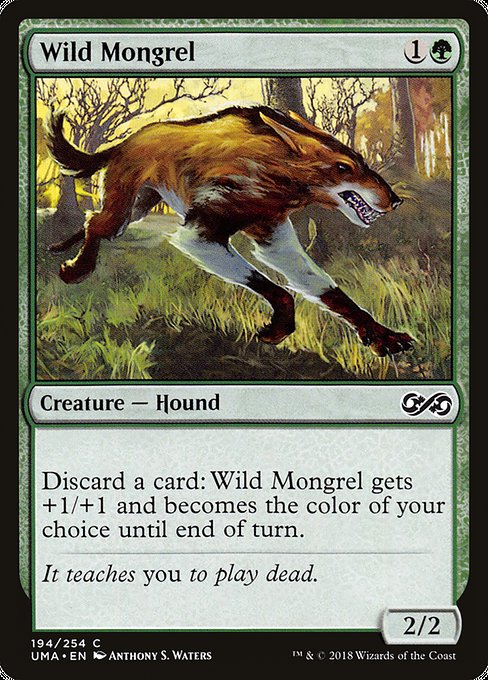
It’s very similar to how Threshold was introduced twenty years ago. In Odyssey block, Wizards printed a huge number of enablers for Threshold, but not a ton of payoffs for reaching it. You were racing to hit seven cards in the graveyard to power up your Nimble Mongoose and feed your Psychatog, but you were mostly counting on Wild Mongrel or basic ludic attrition to get you there. Thus, the quirky Threshold enablers like False Memories fell by the wayside in favor of repeatable discard enablers like Aquamoeba, Putrid Imp, and the Mongrel.
Threshold was a great mechanic–there was tension between how relatively easy it is to achieve and how readily easy it is to disrupt. Seven cards in the graveyard, as twenty years of tournament Magic has proved, is trivial, but sideboard staples like Leyline of the Void and Unlicensed Hearse are extremely powerful at stopping Threshold. Later iterations of Threshold would tweak the requirements–Delirium checks the different card types in your well-stocked ‘yard, Descend requirements permanents–but the basic loop of “discard or mill yourself to power up your cards” remains unchanged from 2002. What has changed is a) the caliber of self-discard and sacrifice effects, which are often gated to mana costs, and b) the caliber of graveyard hate, which easily outpaces the benefits of Descend X/Delirium/Threshold.
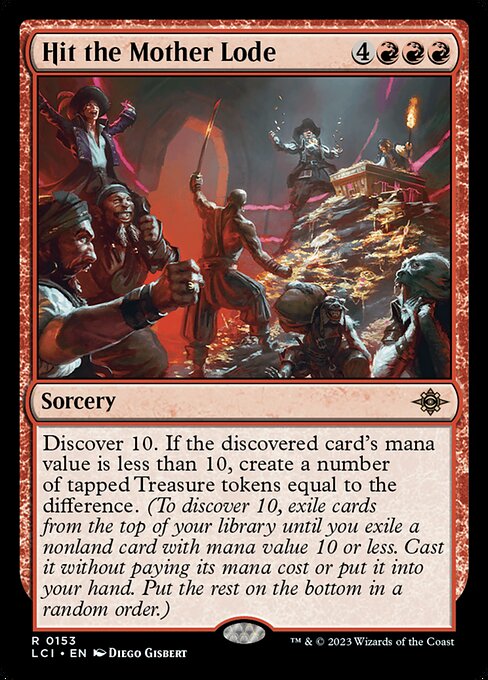
While descend iterates upon Threshold and Delirium, Wizards has tempted fate by revising Cascade, which has now been shifted to “Discover X.” In practice, it’s equivalent to updating “Echo” from “Echo always refers to the card’s casting cost” to “Echo: [COST]” and thus gives Wizards some flexibility, as in cards like Hit the Mother Lode and in the Hidden cycle of lands. Cascade has been historically broken, but it’s more like Madness than Storm–it’s not that the mechanic is inherently absurd, but that cards printed with it treated it as a fringe benefit, rather than as a free draw plus multiple Treasure tokens.
I appreciate the flexibility of the tweak–we could see a hypothetical card with “Discover 2, Discover 2, Discover 2” in the mode of Apex Devastator and other variants that aren’t specified tied to the mana value of the Cascading/Discovered spell, and Cascade is always exciting when it appears. Discover offers more design flexibility while reducing the drawback of Cascade–i.e., while Cascade forces you to either cast the spell you Cascade into, Discover lets you bank it in your hand, which, as anyone who has ever flipped a counterspell with Cascade would note, is an upgrade. Without Valki tricks or Ancestral Vision in the format, Discover seems safe.
At this point, contrary to my initial read of the mechanic as a gimmick, I’m ready to usher transforming cards into the Magic pantheon along with Kicker, Flashback, and Cycling. Wizards has returned to the Innistrad mechanic numerous times over the last twelve years, and found new flavor and meaning each time–from the body horror of erupting Eldrazi in Eldritch Moon to the warped recurrence of the March of the Machine Praetors to literal Transformers.
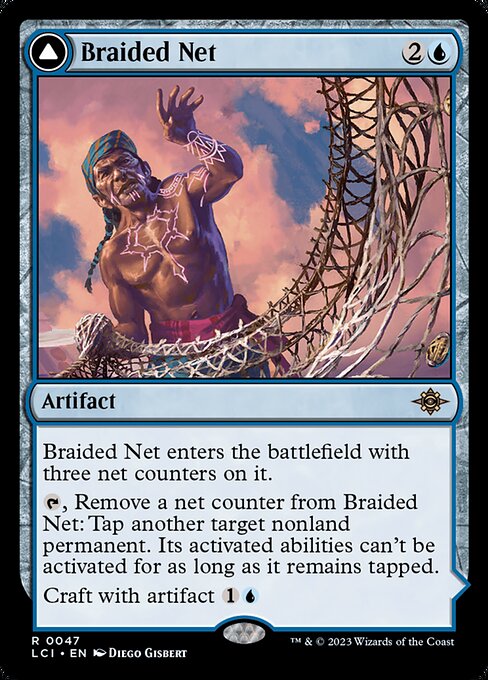
In Lost Caverns, Craft lets the savvy explorer combine their tools or scrap with newfound treasure to summon Skeletons, turn a Bonesplitter into a blunderbuss, and infuse Dinosaurs with filigree armor. There are limitations for double-faced cards–mostly clustered around the fallibility of human recall and pattern recognition–but they’ve become an integral part of Magic and have, at this point, become more of an expectation than a mechanic, even if it’s just for a cycle or two per set. Craft, as a complex mechanic with a lot of dials, there’s space to play around in, and I anticipate fun designs in Modern Horizons 3 that update Craft in the same way Dermotaxi did for Vehicles. It’s flavor-neutral and flexible and could just as easily be employed by Zendikar’s skyclave delvers, Kaladesh’s artificers, or Innistrad’s stitchers, depending on the materials used in the crafting. I do want to call out Braided Net specifically as the pinnacle of what I want in a Magic card: a small narrative told through card mechanics and gameplay. The Net starts as a Tumble Magnet with Ixalan flavor, and then, when Crafted with an artifact, becomes a garment that holds knowledge, before being lost and handed down to a future generation. It’s a work of art, from concept to card, and those are always worth spotlighting for praise.
Frankly, there’s a lot to praise in the set. While it’s likely that Lost Caverns of Ixalan’s greatest contribution to Magic will be a reprint of Cavern of Souls, dropping the utility land’s price point to about $20 and introducing it to Pioneer and Standard, there’s no shame in that, particularly when the set also offers the continuation of the Restless lands, the debut of Caves, and exciting cycles of Mythic Gods. I think Blossoming Tortoise is poised for a jump in relevance (and price), and Sheoldred will continue her tyrannical reign, but this certainly seems like a set that will have more impact on Standard than the original Ixalan. Commander players will get their Pirate, Dinosaur, Merfolk, and Vampire upgrades–not they need them, as most of the difficulties with those decks is now finding what to cut. Modern is in gridlock right now, and it would be overly optimistic to imagine a Standard set will influence it much, but in general, Caverns gives Ixalan new depth. Like the best “return to plane X” sets, it builds off of what came before and offers new interpretations of familiar tropes and archetypes, giving us new territory to explore and new tools with which to explore.
Rob Bockman (he/him) is a native of South Carolina who has been playing Magic: the Gathering since Tempest block. A writer of fiction and stage plays, he loves the emergent comedy of Magic and the drama of high-level play. He’s been a Golgari player since before that had a name and is never happier than when he’s able to say “Overgrown Tomb into Thoughtseize,” no matter the format.

